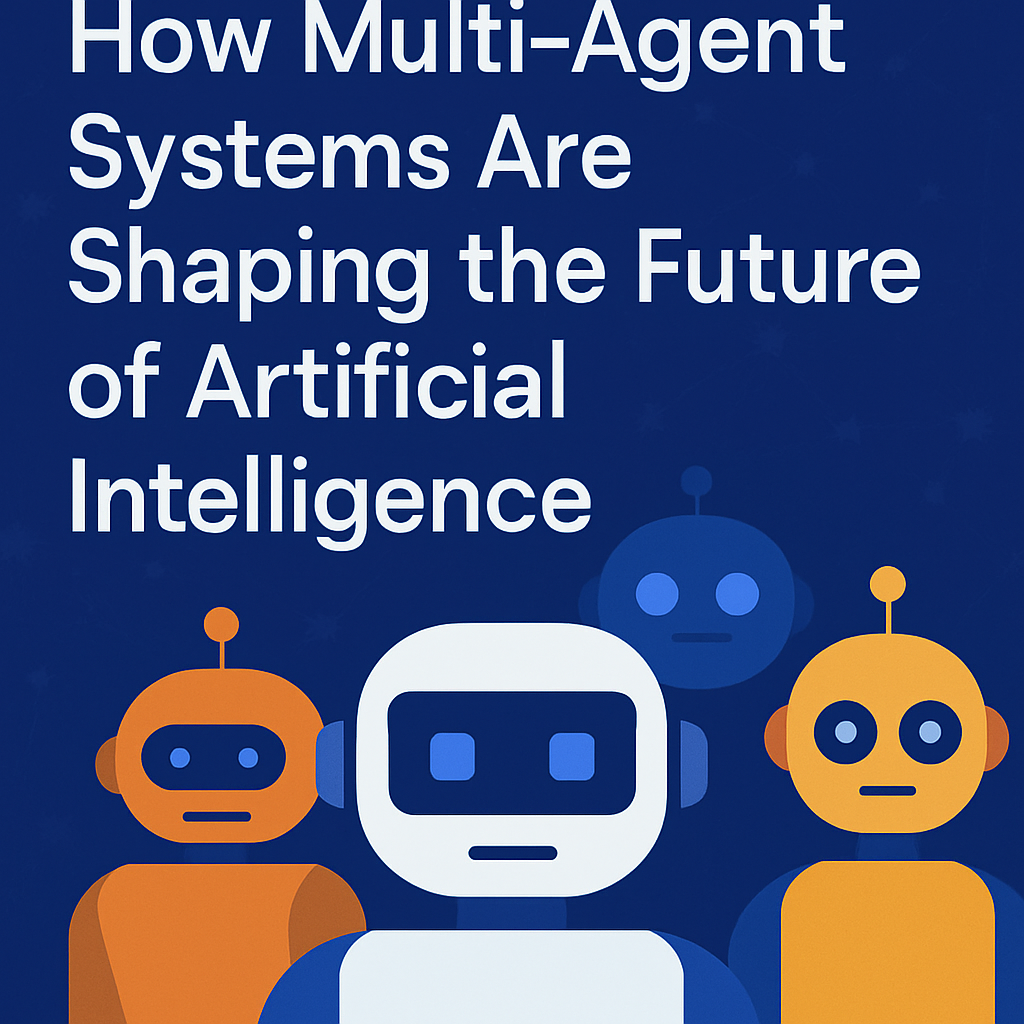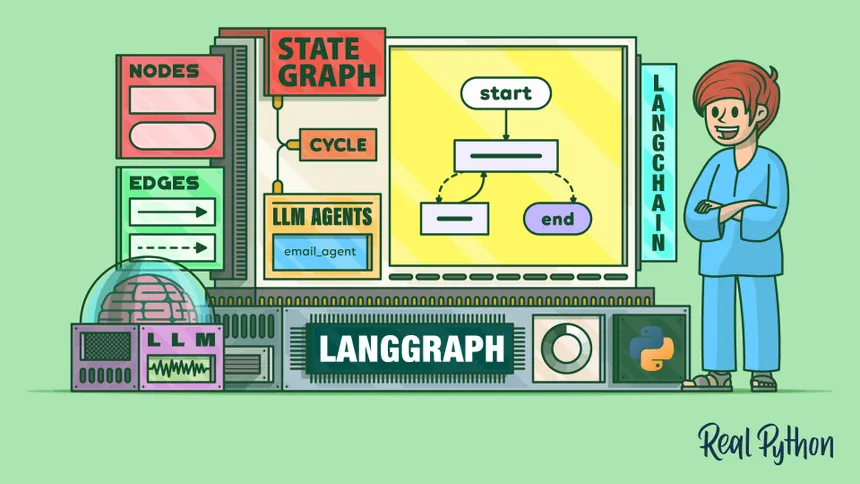CAMEL and Multi-Agent AI: A New Era of Machine Intelligence
Introduction
AI agent! What do you mean by an AI Agent? An autonomous agent that is set or programmed in a way to perform a domain-specific task. For eg, Github Copilot, which is a code development AI agent and is responsible for understanding natural language and transforming it into usable code. It is often pre-installed in certain IDEs as an AI assistant.
AI agents have one major drawback — they can only perform the specific tasks they are designed for. If they encounter a problem outside their scope, they either throw an error or respond that they lack the capability to handle it.
This is where MAS, i.e, Multi-Agent System, comes into play. Multi-Agent Systems typically consist of multiple AI agents that work together in a collaborative environment to carry out user-required tasks. We will have a brief discussion and see a lot of examples of how MAS carries out tasks and how they are way more efficient than an AI Agent.

Multi-Agent System: Future of AI
When multiple AI agents collaborate independently toward a common goal, they form what’s known as a Multi-Agent System (MAS). These systems typically rely on three main types of frameworks to operate effectively. All of them have different approaches as well as different outcomes towards a problem.
- Cooperative: In this, agents work to achieve a shared purpose.
- Competitive: In this, agents try to work in a competitive environment means they all try to outperform each other often resulting in more efficiency and accurate results.
- Hybrid: It consists of both types of models, i.e, cooperative and competitive.
Think of MAS as a Cricket or a Football match where each player has a specific role to perform and the result depends on the collaborative outcome.
Single-Agent vs Multi-Agent Systems
Scalability and Specialization
When there are many tasks to be executed, a single agent might face issues while multitasking, as well as because of less in-depth knowledge of the domain. It might not produce accurate results for complex problems. Whereas MAS has the capability and feature of designing each agent according to the needs.
For eg, nearly 2 months ago I made a college project, Tutor Agent, in which I made different Tutors like Math Agent, which was responsible for all the mathematical part, Physics Agent, which was for all the physics part. Each agent was capable of working independently. By this, you can design various agents according to their role.
Parallelism
In MAS, multiple agents can be run simultaneously, resulting in faster completion of multiple tasks which further results in high efficiency and responsiveness, whereas an AI agent may not execute another task until the current one is fully completed. Typically Non-preemptive sorta thing.
Critical Intelligence
When communicating with multiple AI agents at once. It may allow agents to develop behaviour not programmed intentionally; this phenomenon is known as Critical Intelligence. MAS most of the time outperforms single AI agents because of its capability to handle dynamic or unpredictable problems.
Let me give you an example of it. The Anti-Colony Optimization Algorithm. It says that an individual ant does not know which route to take to reach its destination. They decide collaboratively and then make the decision. Big Logistics companies like FedEx, DHL, and Air Traffic Management use this technique to decide the best way to move forward which results in:
- reduced fuel costs
- enhanced delivery routes
Refined Modularity
MAS promotes the modular design of each module. A module can be a tool or a function. If there is any need to make changes in any module or AI agent present in the MAS, it can be done smoothly without interfering with the whole system. It gives MAS a very big advantage over others as in complex or Big Enterprise-level systems. It can be a big problem in disrupting the whole system for a single cause.
Decentralization
It refers to the process of assigning or distributing the responsibilities or decision-making power from the central part to a more localized entity. About AI, it refers to giving each agent the power to make or take decisions on their own, and coordinating with each other to carry out tasks smoothly, no single agent or module has control over the system.
Some Popular MAS Frameworks
LangGraph
LangGraph is a very popular and widely used open-source framework that is based on LangChain. It is mainly used to create customized multi-agent workflows.
pip install -U langgraphThe above line of code is used to install LangGraph. It follows a Graph-based architecture where each node represents an agent and an edge shows how the information or steps will be carried out in the workflow according to the output of the current node. The main benefit of using LangGraph is the support it offers for Multi-agent collaboration, allowing to creation of loops for effective parallel execution of tasks, making LangGraph a very versatile framework.

I made a project named ‘Research Paper Synthesizer‘. LangGraph played a vital role in it. The main application of my project was it search 3-5 research papers according to the domain you enter in the search bar, I used the arxiv api for fetching the papers. Then it automatically provides the comparison. If your paper consists of any numerical values, it also visualizes metrics such as accuracy, f1 score, etc. PlotAgent and PaperAgent were the two agents that worked independently and performed tasks. LangGraph helped in maintaining persistent memories between both agents. I have posted a short video regarding this project on my LinkedIn (Link). Check it out, it would be great if you could give me some feedback.
At present am also working on a project named ‘IntelFlux‘ in which I’ll be using 5-7 AI Agents(research, reasoning, mathematical, debate, coding, etc.), and all of them will be working independently in a collaborative environment.
For more info regarding LangGraph, visit their official website.
CAMEL
CAMEL stands for Communicative Agents for Mind Exploration of Large Language Models. It is also a multi-agent framework. It typically consists of 4 main components that works together to achieve a desired GOAL:
- User Agent: It acts as a user with a goal to achieve.
- Assistant Agent: It acts as an expert or a guide who answers the questions asked by the assistant agent.
- Task Techniques: This is the main topic on which both agents kind of debate with each other until they have reached or have abandoned the task.
- Controller: It controls the conversation between the agents and keeps track of the previous dialogues.
CAMEL is used to understand how LLM simulates behaviour on both sides of the agent smartly. It analyzes and proves that in multi-agent setups, LLM can generate more accurate and furnished solutions.
┌────────────┐
│ Task Prompt│
└────┬───────┘
↓
┌──────────────────────┐
│ Role Assignment │
│ (e.g., user vs. dev) │
└─────────┬────────────┘
↓
┌──────────────────────────────────────┐
│ Multi-Turn Dialog (User ↔ Assistant)│
└────────────────┬────────────────────┘
↓
┌──────────────────┐
│ Stopping Criteria│
└──────────────────┘Above is a workflow that depicts how CAMEL typically works. The task prompt is a basic instruction that defines what needs to be achieved. In the Role Assignment, both the agents,, i.e, Assistant Agent and User Agent, are configured. Then the agents start interacting with each other, the user agent asks and the Assistant agent responds accordingly. This phase is held in Multi-Turn Dialog where they make decisions, share information, etc. Once the stopping criterion is met, either there is a solution or a type of summary that is generated after the conversation is held.
For more info regarding LangGraph, visit their official website.
📬 Want to connect or collaborate? Head over to the Contact page or find me on GitHub or LinkedIn